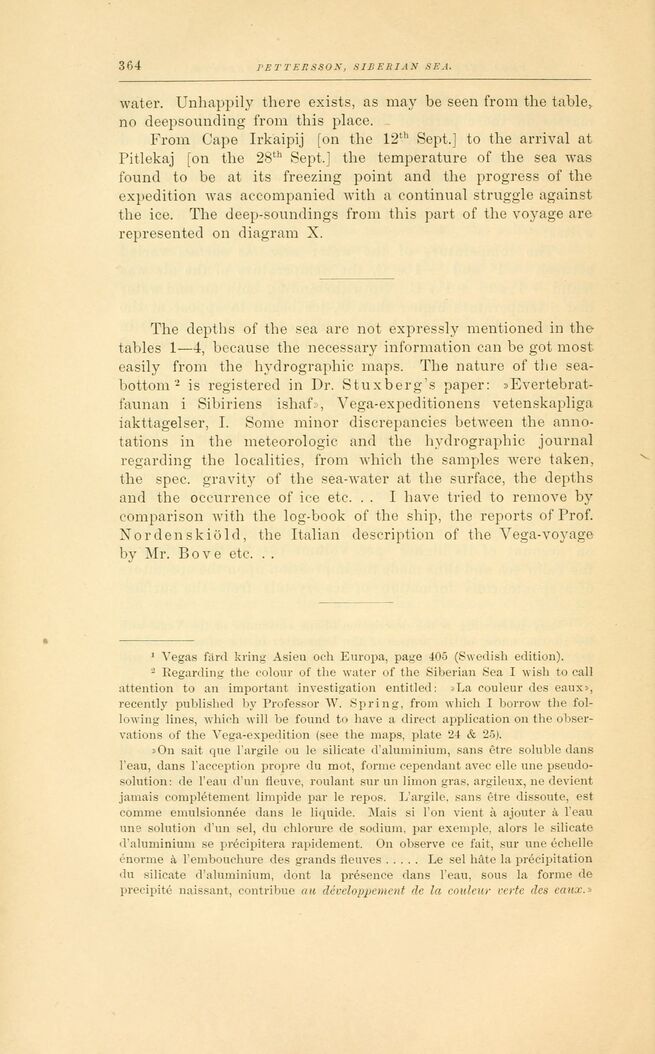
Full resolution (JPEG) - On this page / på denna sida - Sidor ...

<< prev. page << föreg. sida << >> nästa sida >> next page >>
Below is the raw OCR text
from the above scanned image.
Do you see an error? Proofread the page now!
Här nedan syns maskintolkade texten från faksimilbilden ovan.
Ser du något fel? Korrekturläs sidan nu!
This page has never been proofread. / Denna sida har aldrig korrekturlästs.
water. Unhappily there exists, as may be seen from the table,,
no deepsounding from this place.
From Cape Irkaipij [on the 12th Sept.] to the arrival at
Pitlekaj [on the 28th Sept.] the temperature of the sea was
found to be at its freezing point and the progress of the
expedition was accompanied with a continual struggle against
the ice. The deep-soundings from this part of the voyage are
represented on diagram X.
The depths of the sea are not expressly mentioned in the
tables 1—4, because the necessary information can be got most
easily from the hydrographic maps. The nature of the
sea-bottom2 is registered in Dr. Stuxberg’s paper:
»Evertebrat-faunan i Sibiriens ishaf», Vega-expeditionens vetenskapliga
iakttagelser, I. Some minor discrepancies between the
annotations in the météorologie and the hydrographic journal
regarding the localities, from which the samples were taken,
the spec, gravity of the sea-water at the surface, the depths
and the occurrence of ice etc. . . I have tried to remove by
comparison with the log-book of the ship, the reports of Prof.
Nordenskiöld, the Italian description of the Vega-voyage
by Mr. Bove etc. . .
1 Vegas färd kring Asien och Europa, page 405 (Swedish edition).
2 Regarding the colour of the water of the Siberian Sea I wish to call
attention to an important investigation entitled: »La couleur des eaux»,
recently published by Professor W. Spring, from which I borrow the
following lines, which will be found to have a direct application on the
observations of the Vega-expedition (see the maps, plate 24 & 25).
»On sait que l’argile ou le silicate d’aluminium, sans être soluble dans
l’eau, dans l’acception propre du mot, forme cependant avec elle une
pseudosolution: de l’eau d’un fleuve, roulant sur un limon gras, argileux, ne devient
jamais complètement limpide par le repos. L’argile, sans être dissoute, est
comme emulsionnée dans le liquide. Mais si l’on vient à ajouter à l’eau
une solution d’un sel, du chlorure de sodium, par exemple, alors le silicate
d’aluminium se précipitera rapidement. On observe ce fait, sur une échelle
énorme à l’embouchure des grands fleuves Le sel hâte la précipitation
du silicate d’aluminium, dont la présence dans l’eau, sous la forme de
précipité naissant, contribue au développement de la couleur verte des eaux.*
<< prev. page << föreg. sida << >> nästa sida >> next page >>